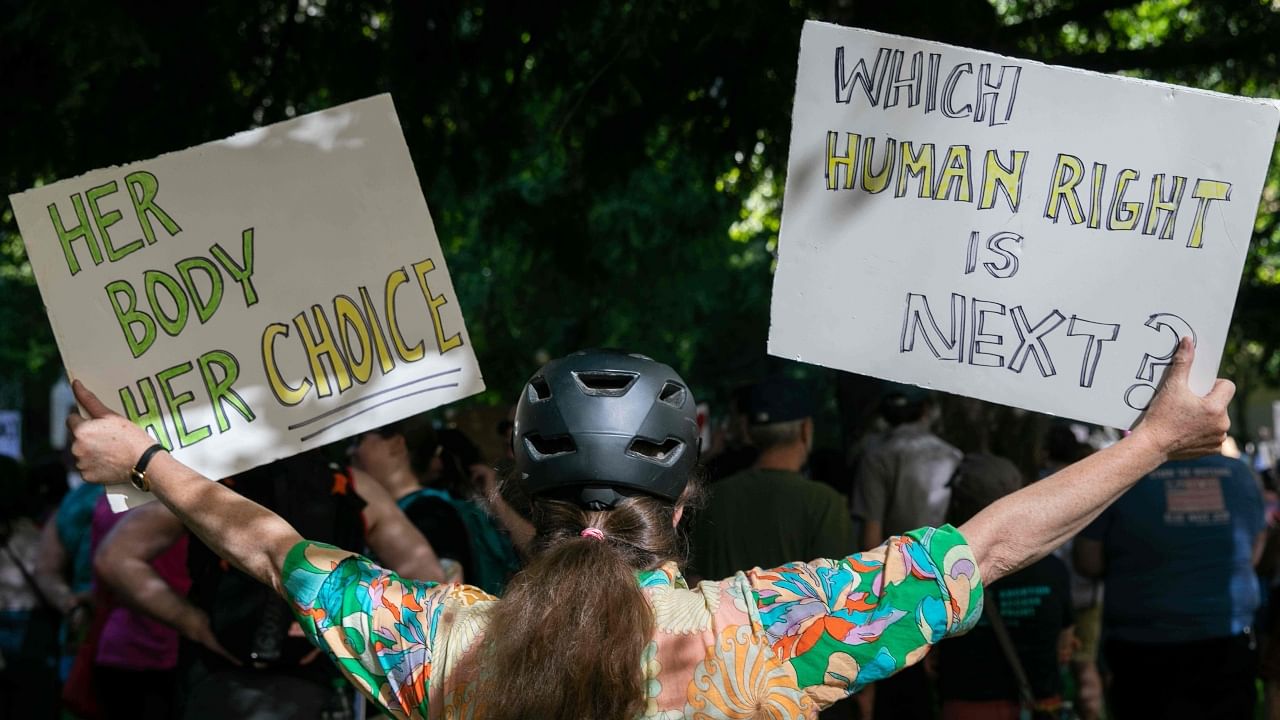
For about five decades, abortion in the United States was a constitutional right due to the 1973 US Supreme Court ruling on Roe v Wade. On Friday, the US Supreme Court overturned that judgement with a 6-3 majority.
The decision is expected to transform the lives of American women with abortion bans coming into effect in almost half the states. The New York Times reported that soon after the decision was announced, the state of Missouri, which would be followed by other states, activated its 'trigger law', which effectively bans abortion except in the case of medical emergencies.
Roe v Wade and foetal viability
The Roe v Wade case had two stages - one was in 1969 and the other in 1973.
Under the alias 'Jane Roe', 25-year-old Norma McCorvey challenged Texas's criminal abortion laws in 1969. Abortion was illegal in the state and was only permitted when the mother's life was in danger. District Attorney for Dallas County Henry Wade defended the anti-abortion statute. The case was rejected.
Her appeal reached the US Supreme Court in 1973, where it was heard with another from Sandra Bensing. They contended that the Texas and Georgia abortion regulations went against the US Constitution because they violated a woman's right to privacy.
The Supreme Court justices, with a vote of seven to two, decided that governments lacked the authority to forbid abortions and judged that the US Constitution protected a woman’s right to terminate her pregnancy. The court also ruled that abortions would be legal up to the point of foetal viability. This is the time after which a foetus can survive outside the womb. At the time, foetal viability was around seven months. Now, with advancements in healthcare, it stands at six months or a little less.
Read | A regression in time
The concept of foetal viability is important because it is often seen as the mark at which the right to abortion is separated from the rights of an unborn foetus.
Mississippi abortion ban
A majority of abortions are prohibited under Mississippi law after 15 weeks of pregnancy, two months sooner than permitted by Roe. The Republican-controlled Mississippi Legislature passed the bill in 2018 but it was never put into effect.
Setting the basis for the current decision, the Supreme Court heard arguments in December regarding the Mississippi law that directly challenged Roe v. Wade.
What does overturning Roe v Wade mean?
The court ruled in favour of the Mississippi ban. The overturning of the Roe v. Wade verdict effectively makes it possible for states to ban abortions earlier than 12 weeks. While abortion won't immediately be banned nationwide, individual states will now have the power to determine whether and how to permit abortions.
According to the Guttmacher Institute, more than 20 US states will move to ban abortion and approximately 40 million women will live in states where abortion will be difficult to access.
The debate over the legalisation of abortion is one that has split liberals and conservatives for decades. Due to the absence of a federal law that protects the right to abortion, the decision is now left in the hand of individual states, many of which will enact abortion restrictions and bans.
What happens next?
Even before this ruling, access to abortion was limited in the US, especially for those in Republican states. Thirteen states have trigger laws and nine have pre-Roe laws that were never amended. Nearly half the states will definitely limit access to abortion. Some states are creating 'safe havens' while 16 states and the District of Columbia will continue to protect the access to abortion.